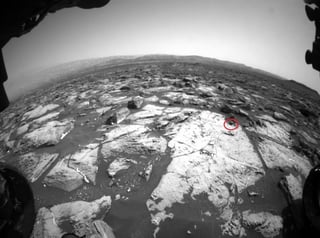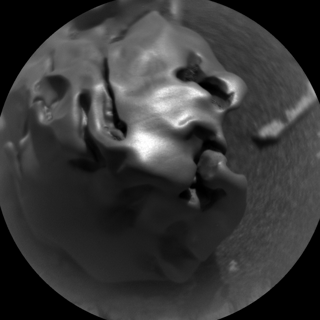People did!
Re-reading the linked article in ASU's Red Planet Report, I noticed at the end it links to an additional article; "More on Egg Rock at redplanet.asu.edu/?p=21047".
That link says:
Laser-zapping of a globular, golf-ball-size object on Mars by NASA’s Curiosity rover confirms that it is an iron-nickel meteorite fallen from the Red Planet’s sky.
Iron-nickel meteorites are a common class of space rocks found on Earth, and previous examples have been seen on Mars, but this one, called “Egg Rock,” is the first on Mars examined with a laser-firing spectrometer. To do so, the rover team used Curiosity’s Chemistry and Camera (ChemCam) instrument.
Scientists of the Mars Science Laboratory (MSL) project, which operates the rover, first noticed the odd-looking rock in images taken by Curiosity’s Mast Camera (Mastcam) at at a site the rover reached by an Oct. 27 drive.
“The dark, smooth and lustrous aspect of this target, and its sort of spherical shape attracted the attention of some MSL scientists when we received the Mastcam images at the new location,” said ChemCam team member Pierre-Yves Meslin, at the Research Institute in Astrophysics and Planetology (IRAP), of France’s National Center for Scientific Research (CNRS) and the University of Toulouse, France.
The iron-nickel meteorite link above points to the same information as well as a further discussion of the meteorite.
below: cropped section of image of "Egg Rock" from redplanet.asu.edu/?p=21047 showing the spots where Curiosity's ChemCam laser has ablated material.




